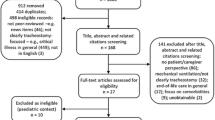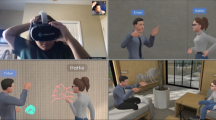Summary
Background
Studies have shown that initiating early palliative care of patients with end-stage cancer can improve their quality of life and decrease symptoms of depression. The challenge is to find an effective way to care for these patients while minimizing the burden on healthcare resources. Telemedicine can play a vital role in solving this problem.
Methods
A user-friendly telemedical device enabling patients encountering medical problems to send a direct request to a palliative care team was developed. A controlled feasibility study was conducted by assigning 15 patients with advanced cancer and their family caregivers to receive either standard palliative care or telemedically augmented palliative care. Th quality of life (QoL) was assessed using standardized validated questionnaires as well as frequency and duration of hospital admissions and user satisfaction. The primary goal of this study was to increase the QoL of patients and their family caregivers. The secondary goal of this study was to decrease the frequency and duration of hospital admissions.
Results
This study showed a good feasibility despite the low overall willingness to participate in a relatively “technical” trial. The hospital anxiety and depression scale (HADS) was significantly lower in the intervention group, suggesting an improved quality of life. Although a decrease in the number of hospital admissions could not be shown, the user satisfaction was very good.
Conclusion
Telemedicine could be a useful tool to enhance the general well-being of palliative oncology patients. Now that the feasibility of this approach has been confirmed, larger studies are needed to verify its positive impact on the QoL.



Similar content being viewed by others
References
World Health Organization. Cancer pain relief and palliative care. Report of a WHO Expert Committee. World Health Organ Tech Rep Ser. 1990;804:1–75.
Hospiz Österreich. Hospiz- und Palliative Care in Österreich 2016: Datenbericht der spezialisierten Hospiz- und Palliativeinrichtungen sowie der Bildungsarbeit. 2017.
Schulz R, Visintainer P, Williamson GM. Psychiatric and physical morbidity effects of caregiving. J Gerontol. 1990;45(5):P181–P91.
Song JI, Shin DW, Choi JY, Kang J, Baik YJ, Mo H, et al. Quality of life and mental health in family caregivers of patients with terminal cancer. Support Care Cancer. 2011;19(10):1519–26.
Kuenzler A, Hodgkinson K, Zindel A, Bargetzi M, Znoj HJ. Who cares, who bears, who benefits? Female spouses vicariously carry the burden after cancer diagnosis. Psychol Health. 2011;26(3):337–52.
Rhee YS, Yun YH, Park S, Shin DO, Lee KM, Yoo HJ, et al. Depression in family caregivers of cancer patients: the feeling of burden as a predictor of depression. J Clin Oncol. 2008;26(36):5890–5.
Cameron JI, Franche RL, Cheung AM, Stewart DE. Lifestyle interference and emotional distress in family caregivers of advanced cancer patients. Cancer. 2002;94(2):521–7.
Fleming DA, Sheppard VB, Mangan PA, Taylor KL, Tallarico M, Adams I, et al. Caregiving at the end of life: perceptions of health care quality and quality of life among patients and caregivers. J Pain Symptom Manage. 2006;31(5):407–20.
Northouse LL, Katapodi MC, Song L, Zhang L, Mood DW. Interventions with family caregivers of cancer patients: meta-analysis of randomized trials. CA Cancer J Clin. 2010;60(5):317–39.
Temel JS, Greer JA, Muzikansky A, Gallagher ER, Admane S, Jackson VA, et al. Early palliative care for patients with metastatic non-small-cell lung cancer. N Engl J Med. 2010;363(8):733–42.
Eedy DJ, Wootton R. Teledermatology: a review. Br J Dermatol. 2001;144(4):696–707.
Braun RP, Vecchietti JL, Thomas L, Prins C, French LE, Gewirtzman AJ, et al. Telemedical wound care using a new generation of mobile telephones: a feasibility study. Arch Dermatol. 2005;141(2):254–8.
Doolittle GC, Allen A. Practising oncology via telemedicine. J Telemed Telecare. 1997;3(2):63–70.
Doolittle GC, Spaulding RJ. Defining the needs of a telemedicine service. J Telemed Telecare. 2006;12(6):276–84.
Hazin R, Qaddoumi I. Teleoncology: current and future applications for improving cancer care globally. Lancet Oncol. 2010;11(2):204–10.
Bjelland I, Dahl AA, Haug TT, Neckelmann D. The validity of the hospital anxiety and depression scale. An updated literature review. J Psychosom Res. 2002;52(2):69–77.
Lo C, Burman D, Hales S, Swami N, Rodin G, Zimmermann C. The FAMCARE-Patient scale: measuring satisfaction with care of outpatients with advanced cancer. Eur J Cancer. 2009;45(18):3182–8.
Tieman JJ, Swetenham K, Morgan DD, To TH, Currow DC. Using telehealth to support end of life care in the community: a feasibility study. BMC Palliat Care. 2016;15(1):94.
van Gurp J, van Selm M, Vissers K, van Leeuwen E, Hasselaar J. How outpatient palliative care teleconsultation facilitates empathic patient-professional relationships: a qualitative study. PLoS ONE. 2015;10(4):e124387.
Hennemann-Krause L, Lopes AJ, Araújo JA, Petersen EM, Nunes RA. The assessment of telemedicine to support outpatient palliative care in advanced cancer. Palliat Support Care. 2015;13(4):1025–30.
Watanabe SM, Fairchild A, Pituskin E, Borgersen P, Hanson J, Fassbender K. Improving access to specialist multidisciplinary palliative care consultation for rural cancer patients by videoconferencing: report of a pilot project. Support Care Cancer. 2013;21(4):1201–7.
Carbo A, Gupta M, Tamariz L, Palacio A, Levis S, Nemeth Z, et al. Mobile technologies for managing heart failure: a systematic review and meta-analysis. Telemed J E Health. 2018; https://doi.org/10.1089/tmj.2017.0269.
Fleisher J, Barbosa W, Sweeney MM, Oyler SE, Lemen AC, Fazl A, et al. Interdisciplinary home visits for individuals with advanced Parkinson’s disease and related disorders. J Am Geriatr Soc. 2018;66(6):1226–32.
Funding
This work was partially supported by the Jubilee Fund of the Austrian National Bank.
Author information
Authors and Affiliations
Corresponding author
Ethics declarations
Conflict of interest
R. Nemecek, P. Huber, S. Schur, E.K. Masel, L. Baumann, C. Hoeller, H. Watzke, and M. Binder declare that they have no competing interests. We declare that we do not have a financial relationship with the organization that sponsored the research. Furthermore, we state that we have full control of all primary data and we agree to allow the journal to review the data if requested.
Ethical standards
All procedures performed in studies involving human participants were in accordance with the ethical standards of the institutional research committee and with the 1964 Helsinki Declaration and its later amendments or comparable ethical standards. Informed consent was obtained from all individual participants included in the study.
Additional information
Publisher’s Note
Springer Nature remains neutral with regard to jurisdictional claims in published maps and institutional affiliations.
Rights and permissions
About this article
Cite this article
Nemecek, R., Huber, P., Schur, S. et al. Telemedically augmented palliative care. Wien Klin Wochenschr 131, 620–626 (2019). https://doi.org/10.1007/s00508-019-01562-3
Received:
Accepted:
Published:
Issue Date:
DOI: https://doi.org/10.1007/s00508-019-01562-3




